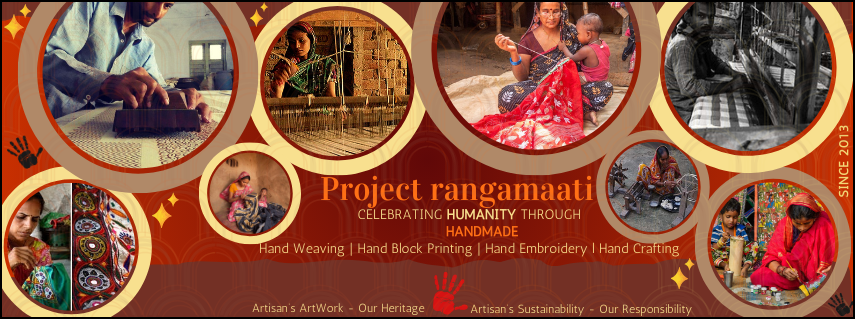Discover Unique Handloom & Handicrafts of INDIA all along Empowering the Artisans !
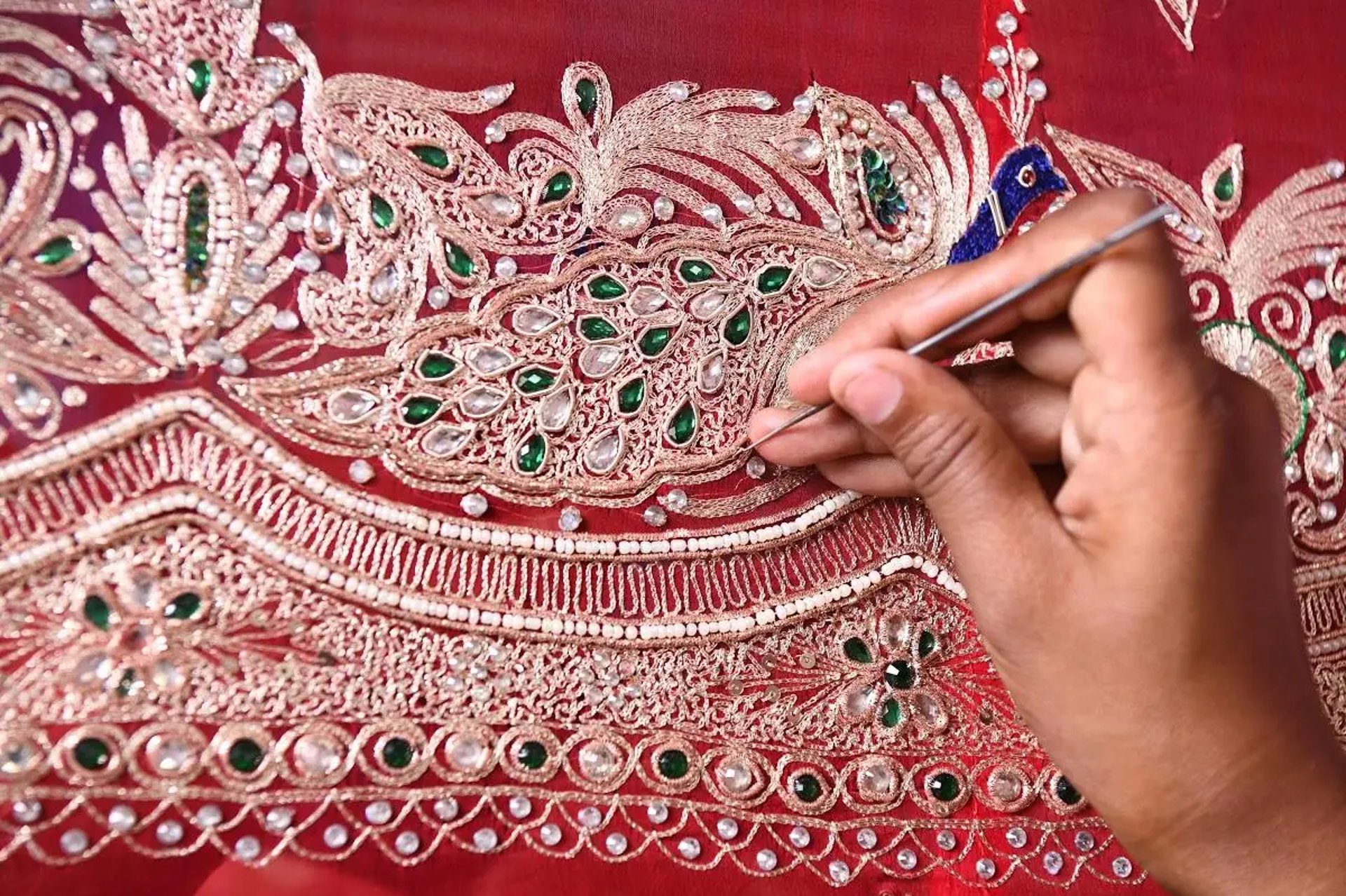
Zardozi HandEmbroidery
Commemorating a millennium of tradition-based craftsmanship in generation.
Konoklata Dhului - Zardozi Hand Embroidery Artisan
Konoklata’s journey into the intricate world of zardozi embroidery began after her marriage, when she moved to her in-laws' house in Howrah. There, she was introduced to the ancient craft by her husband and sister-in-law, who were both skilled artisans in the art of metal thread embroidery. Though initially unfamiliar with this delicate and ornate craft, Konoklata soon became captivated by its richness and history.
Zardozi, once used to adorn the regal attire of kings and nobles, involves the use of gold and silver threads to create elaborate patterns, often embellished with precious stones. The Artistry, which has roots in ancient Persia, flourished in India during the Mughal era and continues to be a symbol of royal elegance. For Konoklata, this traditional craft was not just a skill but a cultural heritage that she was eager to preserve and pass on.
Her passion for zardozi grew with each stitch, as she discovered the beauty in weaving metal threads into luxurious designs that told stories of the past. Konoklata's aspiration as an artisan is to keep the craft alive for future generations, bridging the gap between the past and the present through her work. She dreams of reviving the once-celebrated art form, ensuring that its intricate beauty continues to be appreciated in contemporary fashion and home decor.
Through dedication and perseverance, Konoklata has become more than just a practitioner of zardozi; she is a custodian of this timeless art, with a vision to ensure that it remains woven into the fabric of Indian cultural identity.
Currently,her husband, and her in-laws have a small embroidery workshop they have been able to set up in their house. Konoklata’s dream is to expand the family business and be able to sell her craft individually. She’s happy to be part of rangamaati and start fulfilling her dream..


Her Expertise in Zardozi Hand Embroidery is Skillfully Authentic, and Detailed.
Prof. Swarnajali Chattopadhya - NIFT Lecturer
"
GAJAL , WEST BENGAL
"
ZARI /ZARDOZI FUN FACT CHECK :
There is a Persian Story about Origin of Zardozi, once a mosquito found the entrance to a king’s head, went inside and gave him a severe headache. All the options to get rid of the mosquito failed. Finally, God himself appeared in Hakim’s (doctor’s) dream and told him the cure for the king’s headache. It was to hit the king in the area of the pain with a shoe. The Hakim told the king about this dream.
The king ordered for a shoe embroidered with gold and silver threads for this purpose. The shoe helped to kill the mosquito and cured king’s headache. The king admired the details on the shoe and patronized the artisans as the Zardoz.
"Zardozi Embroidery for Me is like story telling a remembrance of our tradition and staying at its roots " .

Silaai-e-Zardozi
Zardosi embroidery is one of the most popular bridal clothing embroideries. Zardosi work is a royal embroidery type in which various beautiful embellishments are sewn on cloth using a metallic gold thread. This embroidery type is undeniably the most preferred embroidery used by famous bridal designers. Today, it is a favored choice for bridal and ceremonial wear and is a significant export in the handicraft industry. It is practiced in many cities across India, including Lucknow, Bhopal, Delhi, and Hyderabad, with local variations in design and style.The craft has a long history, with its origins in Persia. It gained significant patronage during the Mughal era in India, where it was used to adorn the clothing of royalty.
Traditionally, Zardozi involved using real gold and silver threads, pearls, and precious stones. Today, while pure metal is still used for high-end pieces, artisans more commonly use a combination of copper wire with a gold or silver polish, along with silk thread, sequins, and beads.The technique involves couching metallic wires onto a fabric surface with tiny stitches. Different types of metallic fibers and appliqués, such as dabka (a coiled metallic wire) and sitara (sequins), are used to add texture and detail.
Kam-douzi ZARDOZI Salma Sitara Ka Kaam
A Complete Guide To Zardozi and The Process Of Zardozi Embroidery
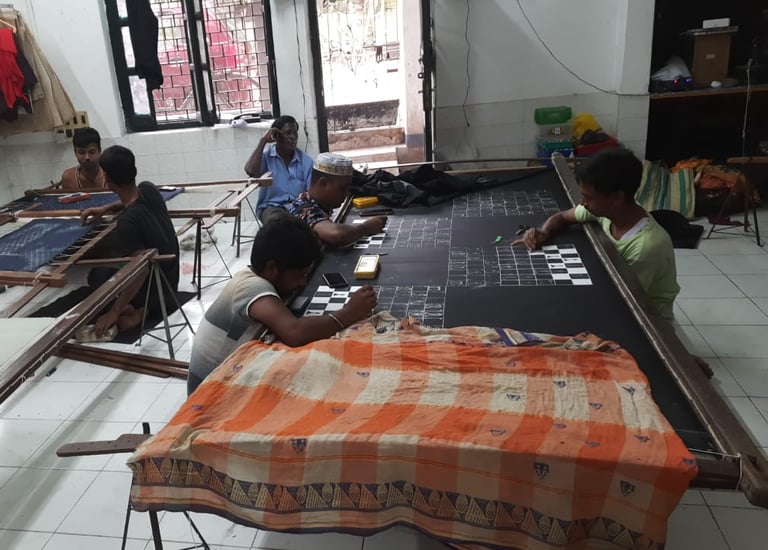

Frame the Fabric
1 "Addaa" is a wooden frame designed to hold the cloth tightly for embroidery, making it ideal for use. This frame features adjustable knockdown bars that rest on four stools or posts located at each corner. The frames can be modified to fit the width of the cloth. They are typically large and primarily constructed from sheesham, known for its durability.
4-6 artisans working from both sides stretches the fabrics across the frame and sit on floor and does the hand embroidery. If the design is small, then a smaller metal frame can also be used instead of the wooden planks.The frame's height is approximately 1.5-2 feet above the floor.
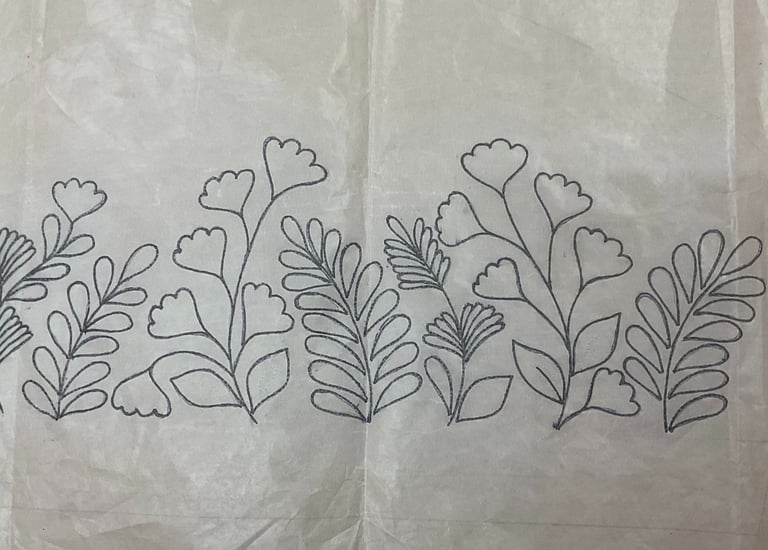

Transfer the Designs


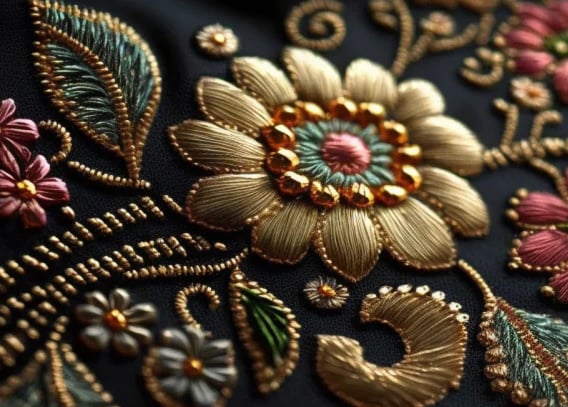

Embroider the Design
1* Artisans sits around the "adda" to begin the embroidery using "Aari " a crochet-like needle with a hook at the tip.
Finish the Embroidery
1* This craft requires high levels of skill and expertise. The dexterity of the craftsman is a measure of his speed and judgment. All the stitches should ideally be of one size. Zari work is done using the ari needle and zardozi is done using the varieties of embroidery needles.
→
→
→
→
1 Traditionally, zardozzi embroidery begins with tracing motifs on cloth using a perforatted tracing or butter paper with the design drawn on it. Small holes outline the designs, allowing artisans to transfer the motifs onto the fabric, usually with a solution mixed from carbon or chalk powder and kerosene. This technique, called Chapaai, can be performed by both men and women.
2* Artisans hold the metallic thread on one side and use the aari needle to pull the thread from the other side, piercing it through the fabric to create stitches.
3 The fabric intended for embroidery is initially stitched to the Patti (thick cloth) that is affixed to the adda. Following this, the embroidery process begins with the aid of aari (needle). The hook at the end of the aari allows the artisan to thread the fabrics both above and below. The needle operates similarly to a sewing machine. This embroidery technique requires a significant amount of time, making it quite costly as well. Depending on its complexity, completing a design could take anywhere from a week to months. Artisans add decorative elements such as sequins or beads as needed for the design.
2* Once the stitching is complete, artisans cut the excess threads and carefully remove the fabric from "adda" the wooden frame.The finished piece is then ironed and prepared for sale.
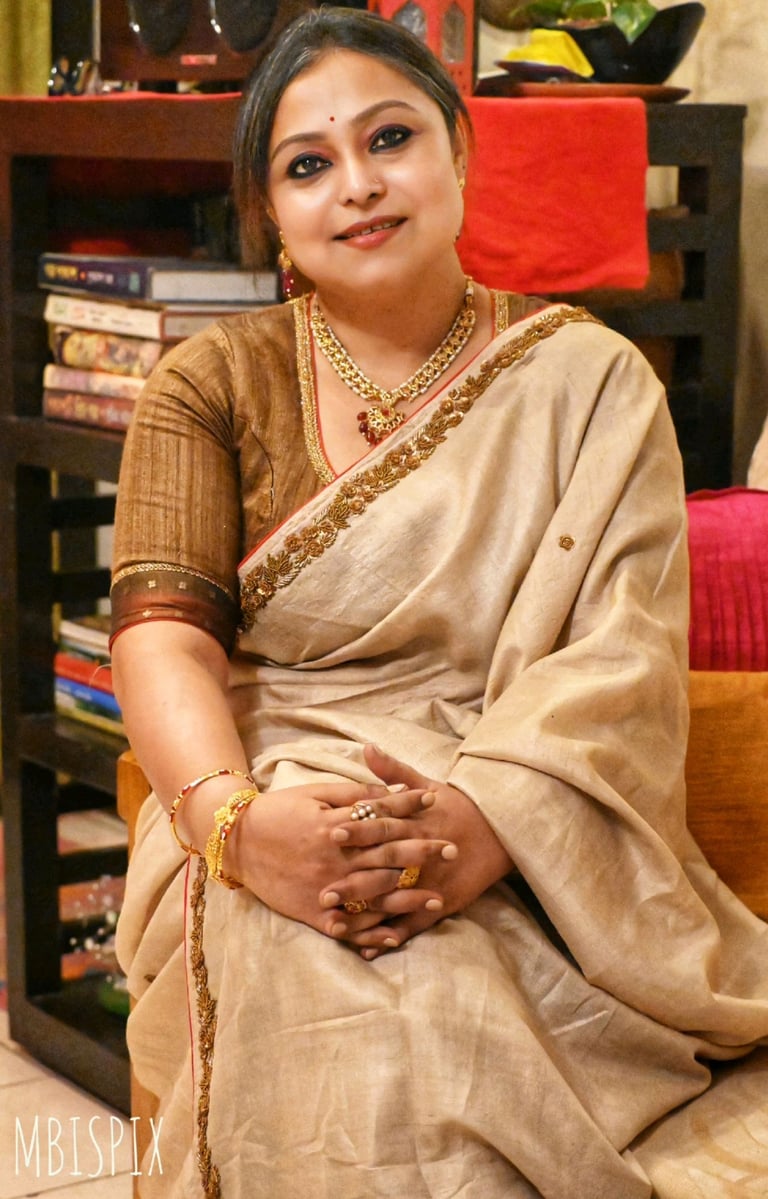

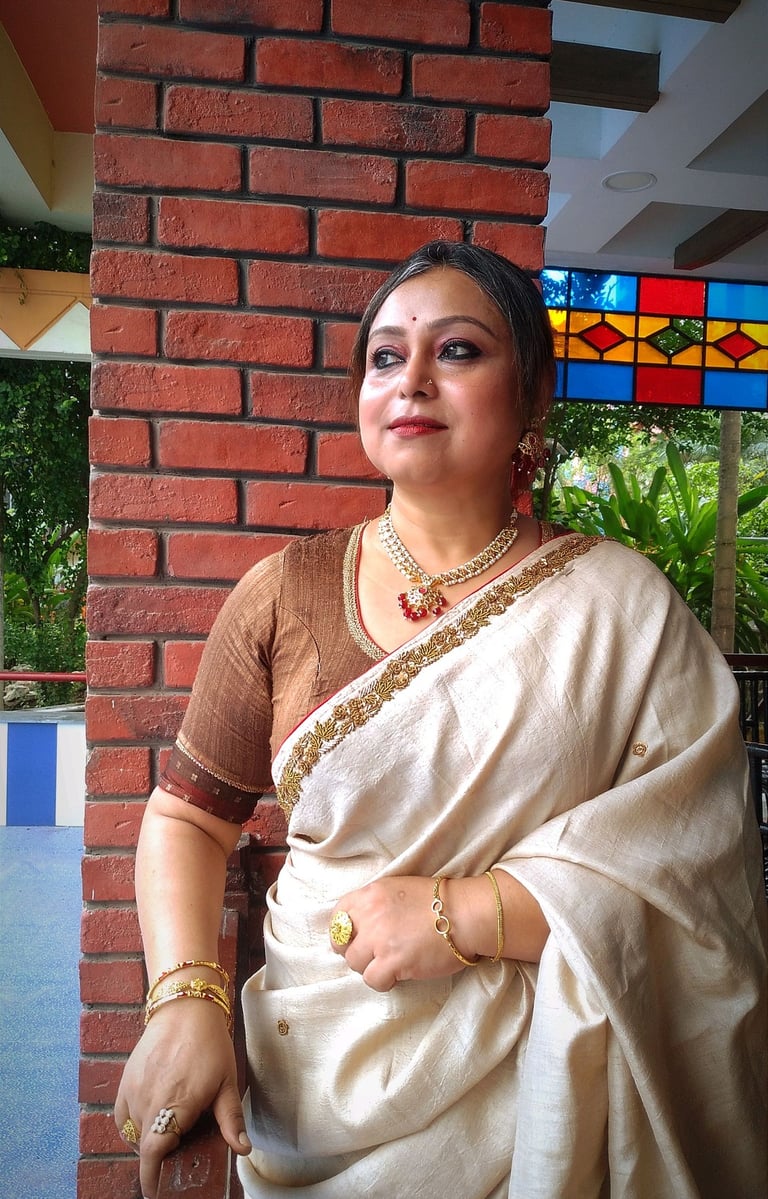

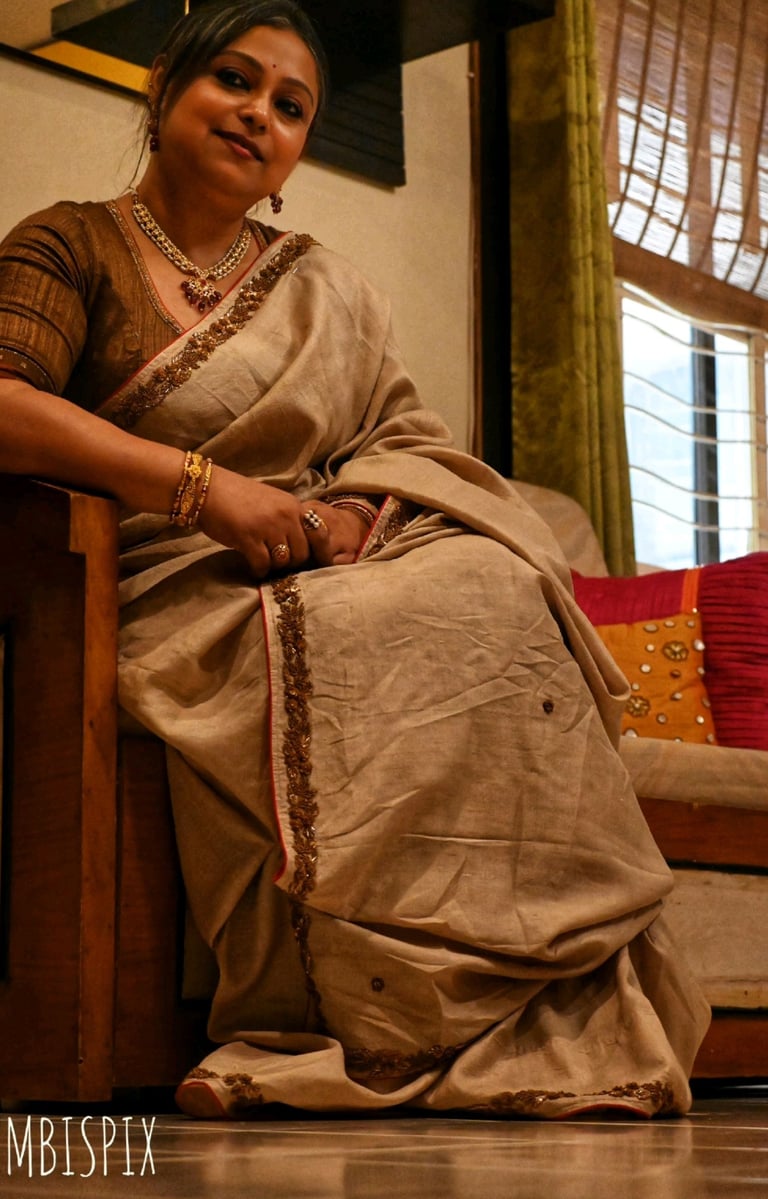



”Past 13 years Project rangamaati is working with new Artform and its Artisans towards continuity and revival of traditional generation based handloom, hand block printing with natural dyes and hand embroidery ,for this Durga Puja I wanted a limited edition exclusive Zardozzi Hand Embroidery on heavy Handwoven Tussar Silk Saress..must say my long wait for 6 months was rewarded many fold...the design was quite intricate and hand embroidery at its best .
Project rangamaati's whole hearted intention to strive to constantly improve their service to the clients by developing the right blend of technology and creativity to make sure every job done is done as efficiently as possible is worth appreciating . I guess the Artisan put the best of their Skills and effort as they feel recognized respected and rewarded fairly.”
- Paramita Biswas , Kolkata , West bengal, INDIA
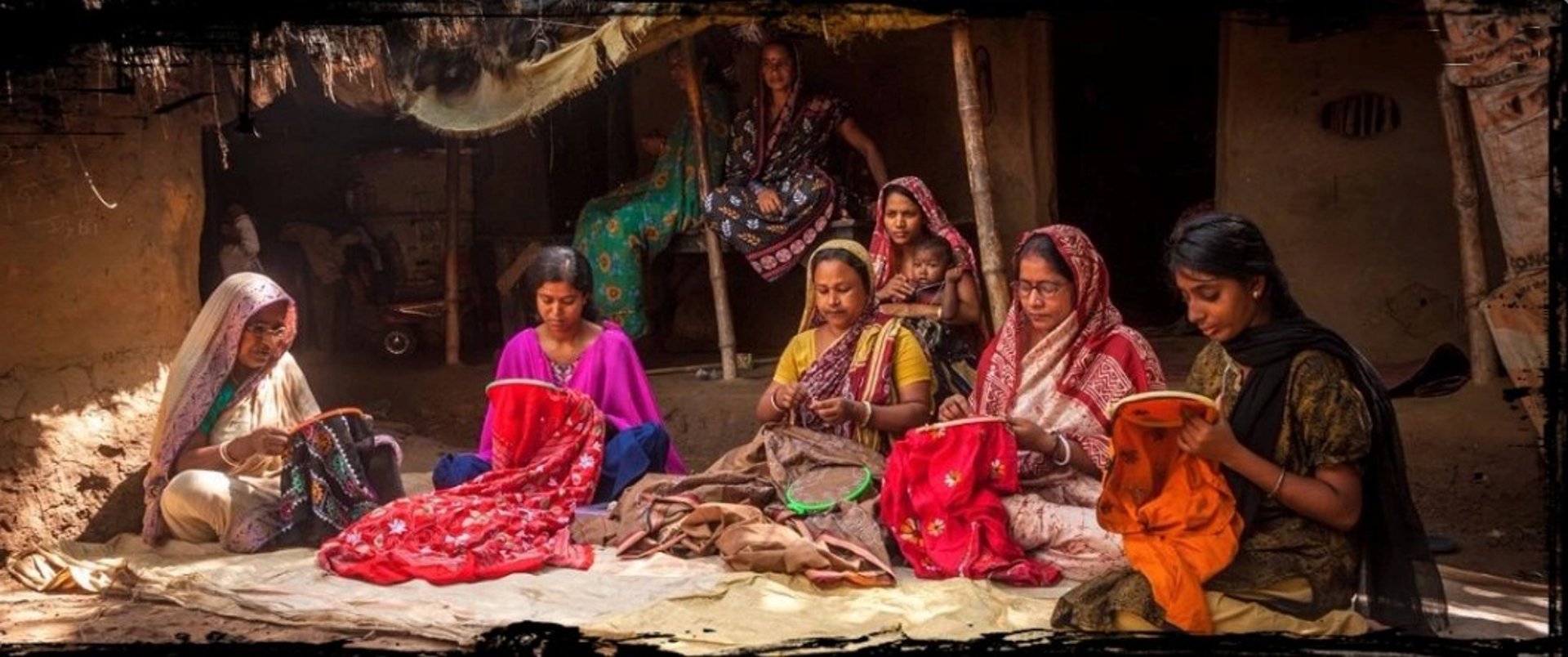
Project rangamaati
Helps YOU connect with Slow Sustainable Fashion over Mass-Production to SAVE Natural Resources, Raw Material and reduce Wastage and impulsive Consumption.
Established in 2013 in Kolkata, West Bengal, Project Rangamaati is a leading online craft store in India, Operating under a fully integrated inventory model. This approach ensures that all products are carefully handled and shipped directly from our Central Hub, reflecting our unwavering commitment to Authenticity and Quality. Project Rangamaati stands as a trusted authority in Traditional Indian Crafts, offering Customers an Authentic connection to India’s rich Artisanal Heritage.
Subscribe to our newsletter
sanjayg@rangamaati.com
+91-9804-219-546
© 2025. All rights reserved | Project rangamaati.
Support our Crowdfunding
May We Help You
Track Your Order
Terms & Conditions
Bulk Orders.
Quick Links
Organisation
projectrangamaati@gmail.com
Got a Question? Call


Love to hear from You
Our B2C Partners
Men's Collection
Flourish
Nymi
IndyMandy
WE SUPPORT SILK, HANDLOOM & HANDICRAFTS PRODUCTS ALL ALONG PRACTISING FAIR TRADE AT A FAIR PRICE.


Press & Media
